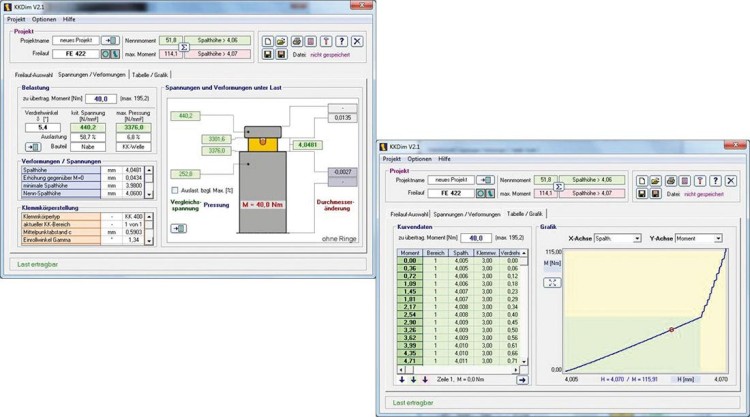The two components, sprags (quantity, clamping angle) and surrounding structure (rigidity, Hertz pressures), determine the transferable torque.
A relative movement between connecting parts in clamping direction causes the sprags to upright and elastically expand the clamping gap between the rings.
When nominal gap height hnom is reached, the freewheel clutch will transfer its nominal torque Tnom, at the maximum gap height hmax its maximum torque moment Tmax.
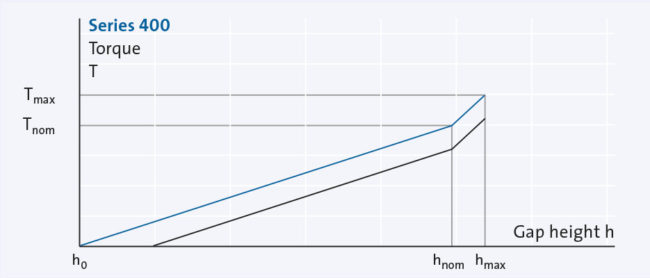
Torque build-up for optimal start gap h0 (blue). Torque development for start gap h > h0 (black). The gradient of the graph remains unchanged, nominal and maximum torque are reduced.
For the gap height, we always differentiate between the start gap height h0, the nominal gap height hnomand the maximum gap height hmax. The maximum gap height is a consequence of the geometry of sprags.

Gap heights
A load-dependent reactive tension builds up in the sprag components and connecting parts.
The linear contact of clamping curves with the connecting parts is evaluated according to the Hertz contact stress model.
The sprag components expand the gap. The maximum gap height is determined by the geometry of sprags.

The freewheel clutch's nominal and maximum torque are defined by reaching one of the relevant load limits.
Sprags as well as the rings are loaded in the contact area by tangential and radial stress. The bending stress σBS perm is a valid equivalent.
The yield point Re is the applicable load limit for all other components in the pressed aggregate.
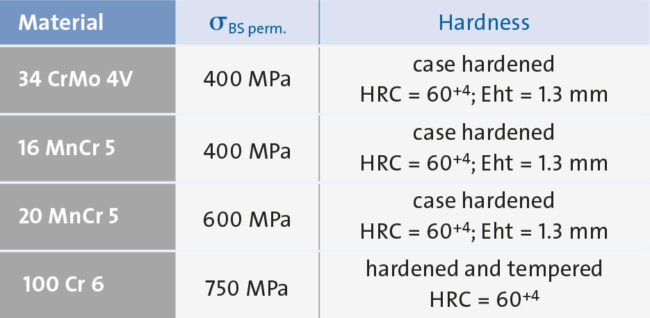
Material characteristics
The transferable torque for a maximum of 3 freewheel clutches arranged side by side is:
The nominal torque (Tnom) describes the torque that the freewheel clutch can transfer as a continuous load.
The calculation of nominal torque is based on a standardized surrounding structure
Deviating characteristics in the surrounding structure influence nominal torque.
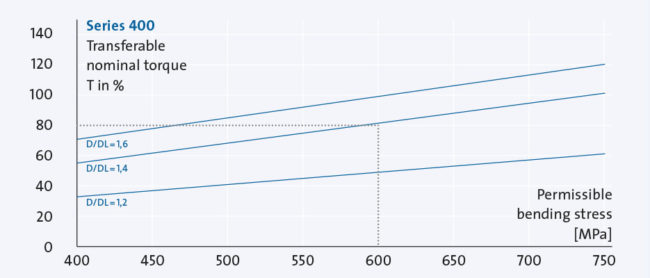
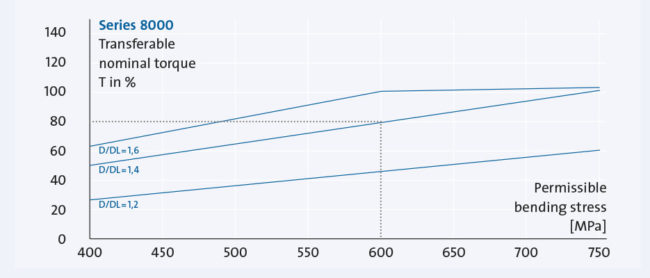
Impact of the rigidity of the connecting parts on the nominal torque. (wall thickness ratios: D/DL = 1.2 / 1.4 / 1.6) (example for 20 MnCr5 - D/DL = 1.4)
W = Width
Wc = Calculative width
FE 400: Wc = 15 mm
FR/FRN: Wc = 15 mm
FP/FN/FPD/FND/FK/FKN: Wc = W
FE 8000: Wc = W + 3mm
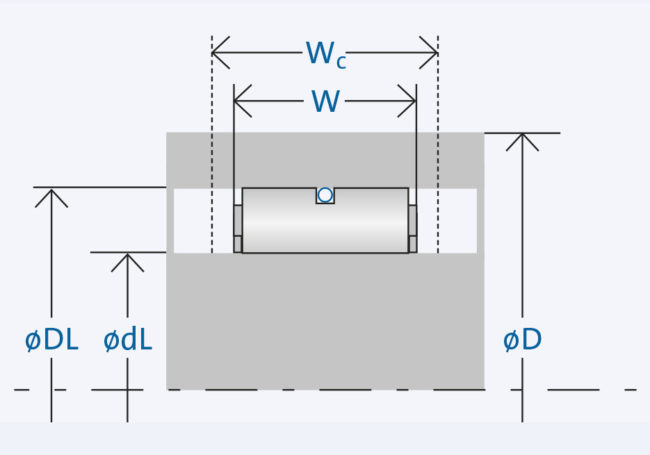
If the load exceeds the specified nominal torque (Tnom), the clamping angle rises with increasing gap height steeply to its maximum permissible dimension (hmax).
Depending on structural shape and surrounding structure, the maximum torque (Tmax) is 1.5 to 2 times the specified nominal torque, but this load cannot be transferred in continuous operation.
If the torque present exceeds the maximum permissible value (Tmax), static friction is lost between rings and sprags (slip limit) and will release the non-positive connection.
The freewheel clutch will slip; this prevents the sprag from tipping over and causing irreparable damage to the freewheel clutch. After the freewheel clutch is unloaded it will return to its idle position.
During idle direction operation, the freewheel clutch exhibits only the very low drag torque necessary to overcome sliding friction between sprags and the rings.
Drag torque is greater for sealed freewheel clutches:
The GMN calculation program determines specific nominal torque with consideration for all influencing factors.
The analysis of a given surrounding structure can reveal optimization potential for connecting parts, provide performance enhancing design advisories and offer support in the selection of a suitable freewheel clutch.
